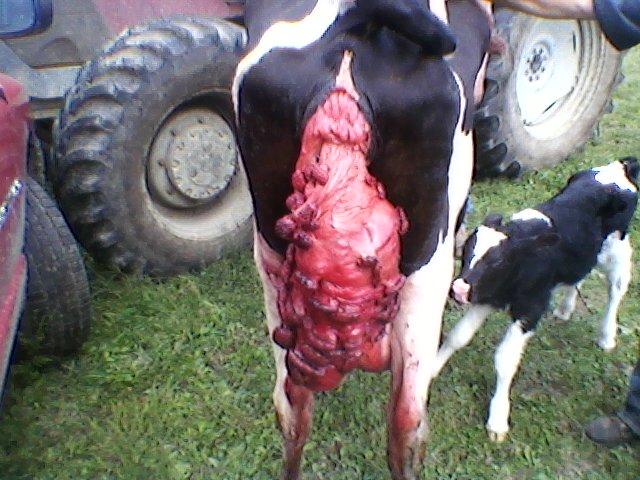What are the stages of calving?
Parturition is the act of calving. There are three stages that are associated with calving. The first stage is the cow’s body preparing for the calf. The cow may become restless
and start to isolate herself from the herd. This stage can last about 2-4 hours for experienced cows and longer for first time heifers, about 4-6 hours. The first stage ends when the “water breaks” and that's when we move into stage 2. Stage 2 is when the calf will be born. The cow can either give birth standing or lying down. This is the stage where trouble can occur. Common problems are that the calf is positioned wrong, it's too big, or mom has run out of energy to push. This stage can last from 2-4 hours and heifers can take longer. The final stage is passing
of the placenta (after birth) and normally occurs within 12 hours.
How can you prepare for calving?
The most problems will occur during stage 2, expulsion of the calf. We call this a dystocia (difficult birth). As mentioned above, there are many reasons for this to occur. If you are noticing there is no progression of the calf within 30 minutes then please give us a call. We can react and have a better chance of pulling the calf with less complications. After calling us, please place the cow in a clean area with a chute or head gate so that when we arrive, we can get right down to business. You can be further prepared by readying a calf kit with clean rags or towels, chains, rectal gloves, and lube. Don't worry if you don't have all that, we will bring our own! Your kit can also include a thermometer, colostrum replacer, and oral tubes in case we have to tube the calf with colostrum.
What other common problems can occur in calving season?
Retained placentas are a common occurrence. This is when the after birth is not passed within 12 hours of calving. In cattle, it is usually not a major concern if it's hanging on a little longer than 12 hours unless they go off feed, have a fever (>103 degree F), and become tired (lethargic). A retained placenta does come with some risks such as developing an infection in the uterus, milk fever, and a displaced abomasum. Please call us with questions and concerns if this occurs so we can better guide you on a treatment plan.
Cattle may also have problems such as prolapse vagina or uterus. A vaginal prolapse usually

occurs before calving in the last trimester. The surface is smooth, and it is not that large. These are not as critical for the cow.
A uterine prolapse usually occurs after calving and is a life threatening condition. The uterus will hang down very far and have dark, raised  bumps/circles all over the surface which is where the nutrients and blood were exchanged between cow and calf.
bumps/circles all over the surface which is where the nutrients and blood were exchanged between cow and calf.
If any of these occur please call us immediately as these prolapses need to be replaced back into the cow as soon as possible.
--Dr. Megan Steel



